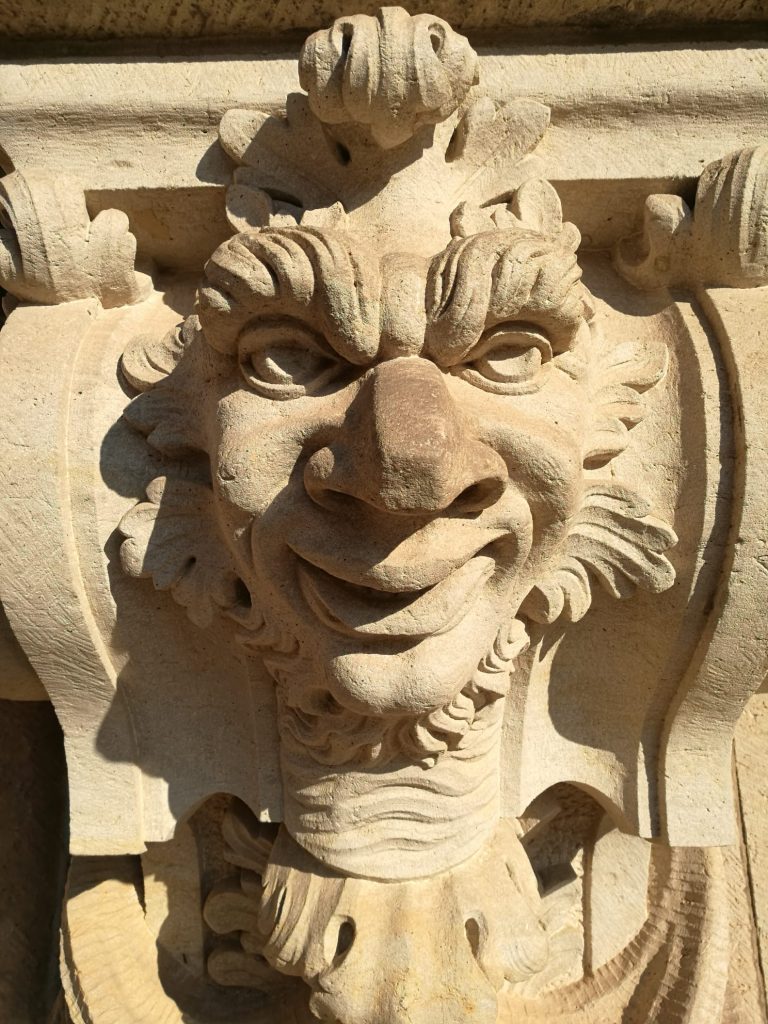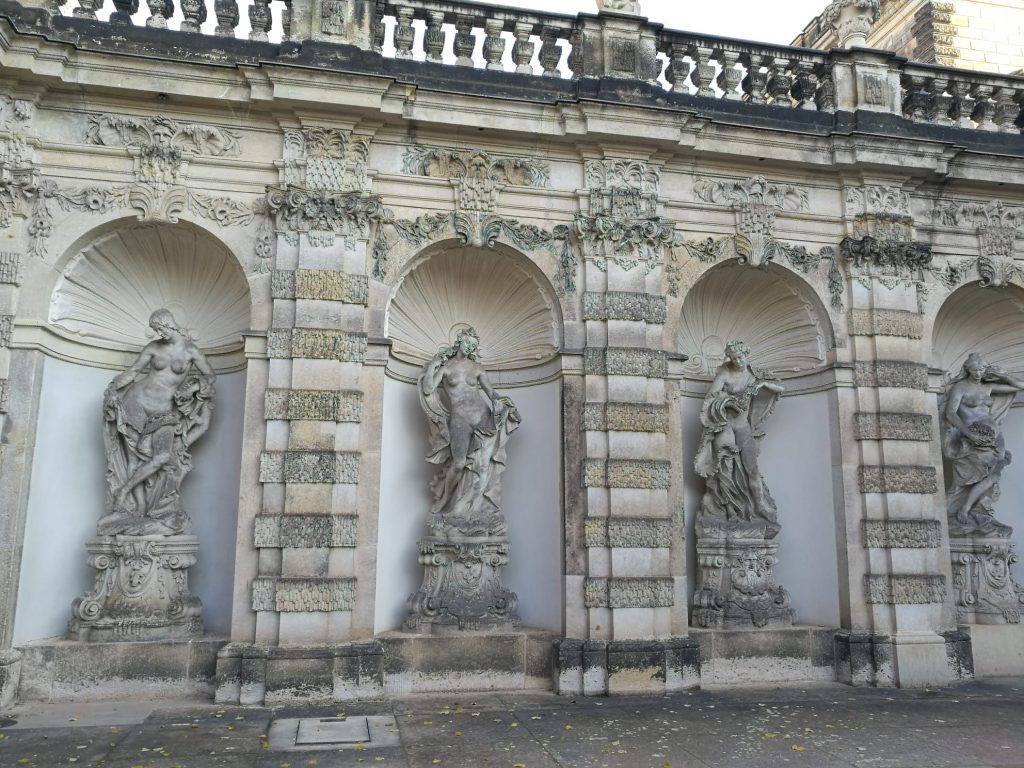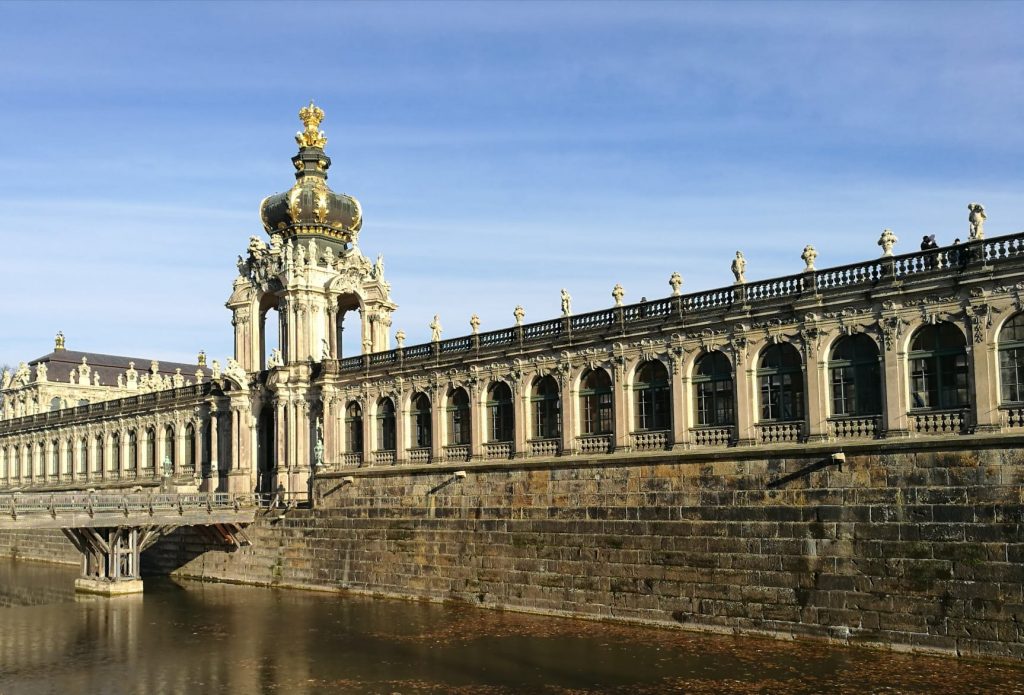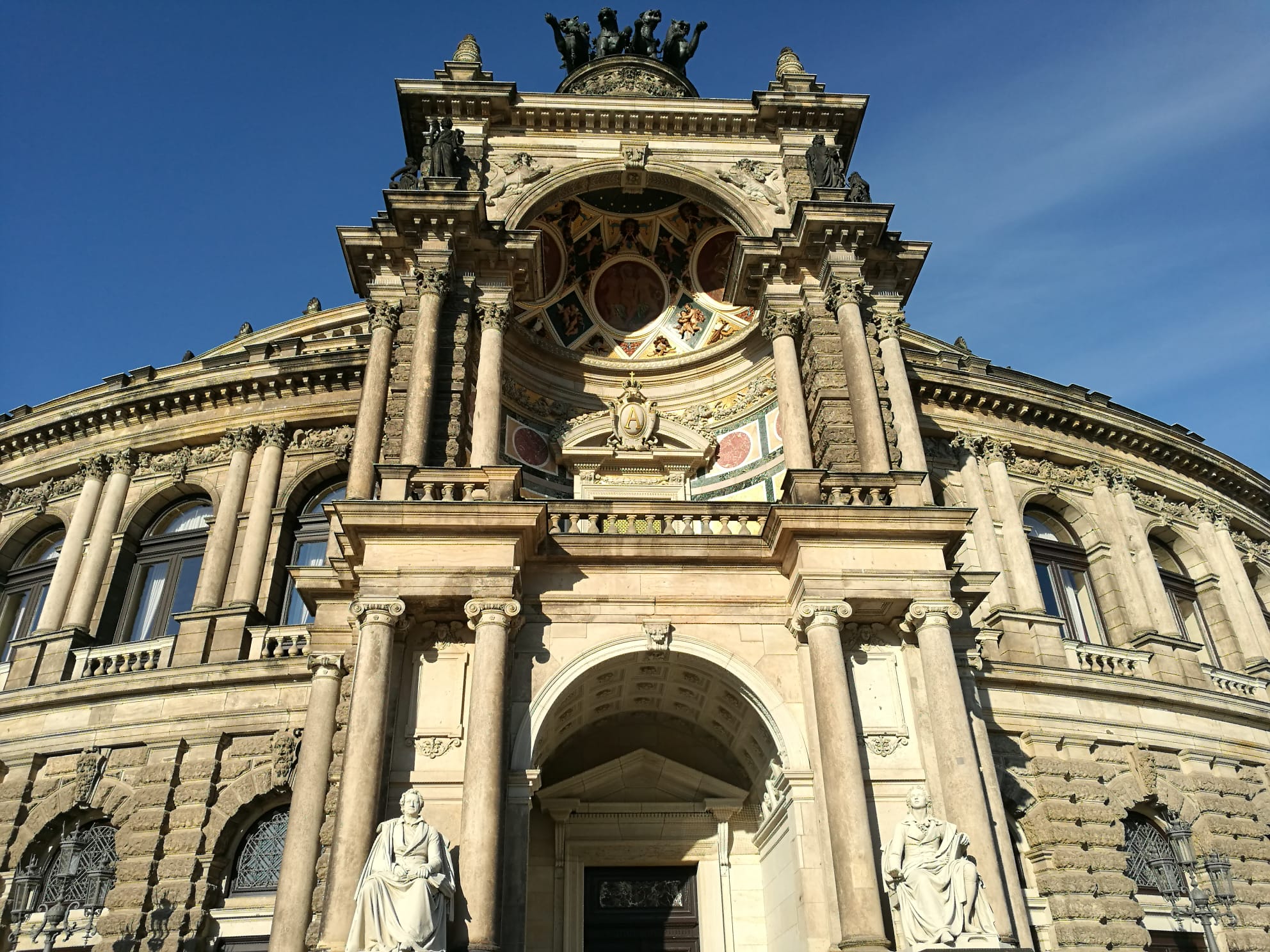Dresden – a beautiful city for flaneurs
The Baroque city of Dresden is one of the most desirable travel destinations in Germany, with numerous impressive types of architecture from different times, lots of art, culture, and traces of history. Beautiful in the summer, when cultural events take place in the city, and fabulous in the winter, especially in the pre-Christmas period, when the city is illuminated, and there are Christmas markets everywhere.
Even the inhabitants of the city love the sight of the old town silhouette with a large number of Renaissance and Baroque buildings, picturesquely located on the river Elbe. To have a closer look at all the museums and their unique treasures and collections, you should plan for a few days at least. But to get a first impression or overview, a walk through the old town (and subsequently the district, Dresden-Neustadt) is a wonderful thing, for everything here is within walking distance. A dream for a stroll – or also a jogging tour (for those, who prefer a more sporty kind of sightseeing).

The old town – the area between the Dresden Zwinger and the Frauenkirche
You can start your walk in the Dresden Zwinger, an overwhelming building of the glamorous Baroque period. Today you can find the museums of the Staatliche Kunstsammlungen Dresden in the inner halls of this courtly work of architecture (you should not miss this if you are in Dresden for several days). Through the Wall Pavilion, you reach the Nymphs’ Bath (a little bit harder to find) with its cheerful fountains and beautiful female statues as well as the roofs of the galleries – from where you have a great view of the entire complex, its beauty, and symmetry.
Passing the spacious and impressive Theaterplatz, with the Semperoper, one of the most historic and famous german opera houses (until today of high international standing), you get to the quarter of the Residenzschloss (Royal Palace), the former residence of electors and kings of Saxony. It‘s kind of the heart of the old town and one of the oldest buildings in Dresden. During a tour around the Residenzschloss you will catch sight of almost every style of architecture from the Romanesque period to Historicism, for its history goes back to the 13th century and all times have left their mark. Here you might just let yourself drift through the narrow streets, have a look at the facades, enjoy the atmosphere, buy some souvenirs in the small shops along the way or take a break in a cafe and have a so-called Dresdner Eierschecke, a special cake, and regional specialty.
When street musicians let their sounds ring out at the Georgentor and horse-drawn carriages roll by, one can truly imagine oneself in times long past. Architecturally striking are also the two bridges, modeled on the Bridge of Sighs in Venice, which branch off from the palace: One connects the palace with the Taschenbergpalais, and the other one leads from the palace directly to the Catholic Court Church. Today it is hard to imagine that the Royal Palace was reconstructed just some years ago. In the bombing of Dresden in February 1945 it was almost completely destroyed and remained a ruin for a long time (the preservation was not easy in GDR times). For a while there was even a mushroom farm housed within the walls, people say.

Walking further towards the Square at the Frauenkirche you will pass an absolute highlight (in Augustusstreet): The Fürstenzug, “Procession of Princes“, a larger-than-life-sized image of a horse-mounted procession, made of about 23.000 painted porcelain tiles (from the famous Saxon Meißner Porzellan Manufaktur). It is 102 meters long, considered the largest porcelain mural in the world, and represents the ancestral gallery of the 35 Wettin rulers. Very impressive and truly unique.

The Dresden Frauenkirche (Protestant Church) today is regarded as one of Dresden‘s landmarks. Destroyed shortly before the end of the Second World War, the ruins of the Frauenkirche remained for a long time as a memorial against war and destruction. After the reunification, the reconstruction of the Frauenkirche (and the whole square) began. Since 2005 the Frauenkirche has once again been an open church for the city. It’s well worth climbing the Dome to the viewing platform and enjoying the great view over the city. (Secret tip: you can have a similar view from above the town hall tower, with fewer crowds, situated only a few meters away from the Frauenkirche.)
In order to finish your tour of the old town you might promenade over the Brühlsche Terrasse along the river Elbe and savor the „famous silhouette“ of Dresden from a closer look, and let your eyes wander a little over the water and the anchored steamships.

Dresden-Neustadt
On the other side of the river Elbe, there is another legendary district and an absolute must: the Dresden-Neustadt. For historical reasons, the quarter is divided into Inner and Outer Neustadt. In the 18th century the Outer Neustadt was outside the city walls and was an unpleasant and dangerous place. Ammunition was stored there, powder kegs and wood – and there was also the gallows.
At the time of industrialization, in the 19th century, numerous factories and businesses settled here in the outer Neustadt, buildings of the Wilhelminian period, colorful and rich in decoration, emerged and it was steaming from the factory pipes. Not only cigarettes, toothpaste, and coffee were produced here, but also chocolate and almond paste. Dresden was considered „the sweetheart of Germany“ for more than a century. Chocolate was sold from here throughout Europe, also to the courts in Vienna and Budapest.
Today this district is an extremely lively, creative, and international part of town with many nice cafes and restaurants, bars, fashion boutiques, small art galleries, stages, clubs, and tiny shops. A quarter for strollers during the daytime and for night lovers during the night, a quarter that offers space for subcultures and alternative ideas. A very inspiring place with many nice paths and surprising backyards, like for example the „Kunsthofpassage“.





